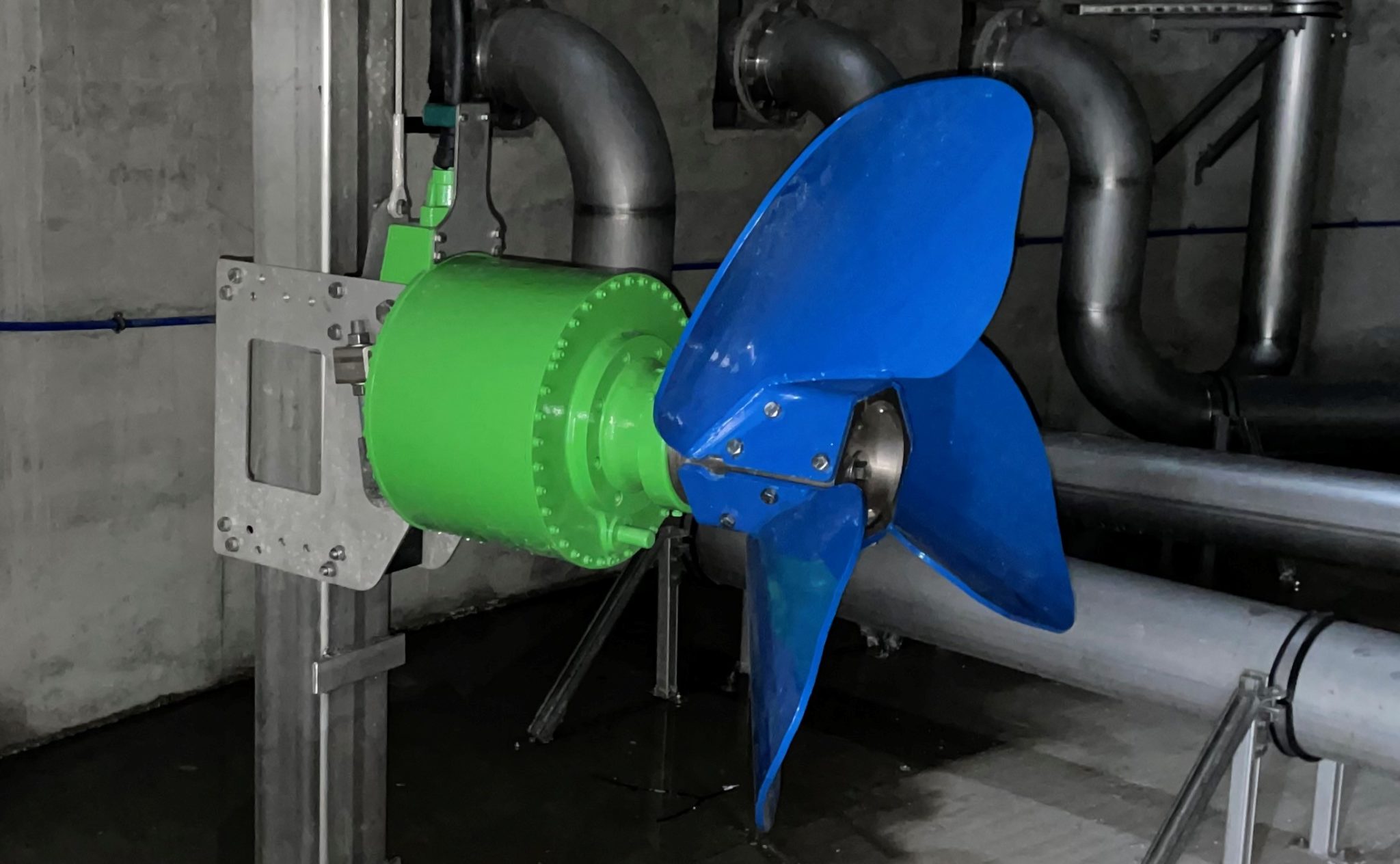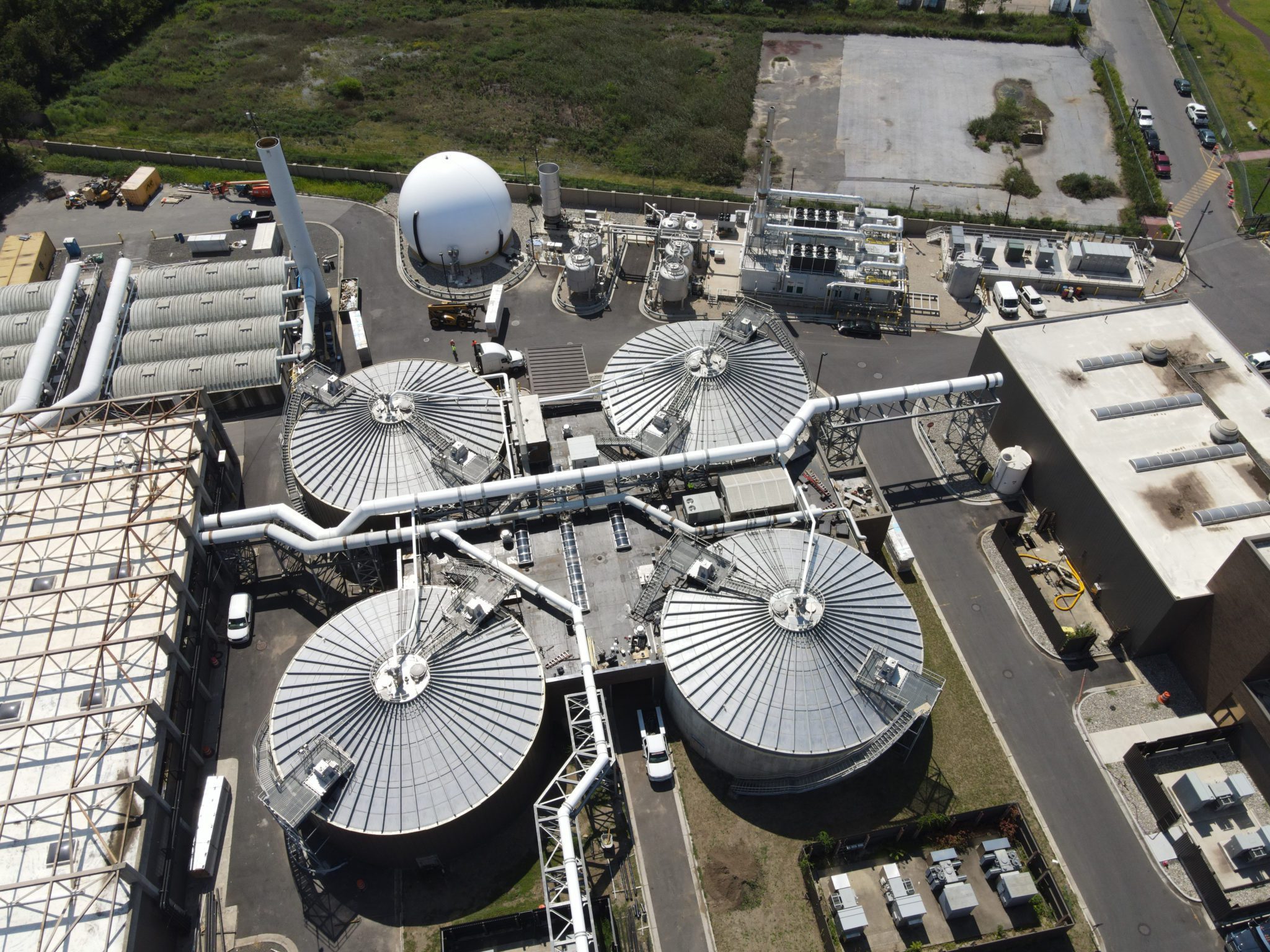Tech Transfer: How Wastewater Plants are Taking Agriculture’s Technologies to Improve Operations
- October 21, 2022
- Melissa Bailey

Mixers for anaerobic digestion in the ag business are now being adopted by wastewater treatment plants
You can’t stop a good idea from spreading. That’s the adage that best describes technology transfer.
The term technology transfer is often thought of as merely the transfer of academic inventions into the broader world. But these days it is more frequently defined as simply the diffusion of technologies across and within industries or countries.
It’s quite common for technologies to be adopted by one sector after they’ve proven successful in others. Think of GPS technology developed by the U.S. military that’s now used in cars, phones, and everywhere. Or 3D modeling, which was initially used for drafting in the automotive industry but now brings us our favorite Pixar and Disney movies.
Similarly, today’s wastewater industry is picking up technologies from the agriculture business. One example is leading-edge digester mixer technology originally developed in European agriculture.
Low Moisture Feedstock Required Superior Technology
Why did the European agriculture industry develop a superior mixing technology? In large part it’s because for 20 years, Germany incentivized its farmers to use their agricultural waste—like corn silage and cow manure—to provide renewable energy for their farming operations. Thousands of farms in Germany have invested in anaerobic digestion systems to create biogas that is used to generate power onsite, and many put power back onto the grid.
Because agricultural waste is very low in moisture, European farms created specialized high-solids digestion technologies to recover biogas most effectively from their waste. As a result, the most robust and efficient digestion tank mixing technology in the world was developed primarily in Germany, with Anaergia’s submersible propeller smart mixer leading the way.
These powerful in-tank propeller mixers have the ability to mix material with solids content up to 15%. What’s more, they pair ruggedness with flexibility. They can handle feedstock viscosities that vary widely—from 1-15% total solids (TS).
In the wastewater sector, high-solids propeller mixing has many advantages compared to low solids systems like pump mix, draft tube, and linear motion. The high torque and low energy usage of these mixers have led to over a hundred being installed in the U.S. and Canada.

Adoption in the U.S.
“It makes sense to adopt a technology that was engineered for another industry if it can work for your purpose,” says Brad Adams, Director of Operations, who operates a 12 million gallon per day (MGD) plant for the Victor Valley Wastewater Reclamation Authority in Victorville, California. Adams’ treatment facility currently has both pumps and propeller mixing systems and is in the process of switching all of its tanks to using high solids propeller-based mixing.
“Most traditional systems for wastewater were developed decades ago. If you look at what has typically been spec’d over the years and compare it with newer technologies, and how they can perform for your operation, it can really pay off for your facility,” Adams says.
Victor Valley Wastewater Reclamation Authority made the change in 2021 as part of upgrades to allow for food waste co-digestion and went with Anaergia’s smart mixers which employ gearless, direct-drive motors for superior efficiency. “These propeller mixers use a lot less energy, and produce a lot more thrust, which should help avoid grit settling and ultimately prevent diminished digestion volume,” Adams says.
Set It and Forget It
Anaergia’s mixer is engineered with a backwards-sweeping sickle-shaped prop blades specifically designed to reduce ragging. But if rags do snag on the mixer cable—which does not tend to effect mixer performance—the mixer’s unique external service box lets operators pull the mixer without taking the digester offline, saving the significant expense and operational impacts of digester downtime.

Another advantage to the Anaergia in-tank propeller mixers is its ability to break up floating layers. The mixer height can be adjusted, and the lateral positioning changed if necessary.
But normally, it’s a “set and forget it” machine and can be particularly useful for facilities like the South San Francisco-San Bruno Water Quality Control Plant, a 9 million gallon per day (MGD) plant in Northern California, which also co-digests food waste with its sludge.
Facilities like these can see quite a bit of variation in their digesters’ solids content. While most mixers cannot adjust to a large degree of solids variation, the OmniMix can be set for constant torque. The mixer then automatically adjusts the force it applies as the biosolids’ viscosity changes, applying more force when the total solids are higher, and automatically reducing force if the sludge is thinner.
For facilities that are short on space and can’t expand their property, in-tank mixing is holds another advantage over pump mixers—it has a much smaller footprint. No external motors are needed, and no pump rooms.
Facilities that co-digest food waste aren’t the only ones benefitting from this German-engineered machine. The 80 million gallon per day (MGD) Camden County Municipal Utilities Authority wastewater treatment facility in New Jersey uses two Anaergia mixers in each of its four digesters.
Camden County uses the mixers to do high solids anaerobic digestion in what were previously storage tanks, using its sludge to create biogas that is then used to generate power.
The energy efficient OmniMix takes much less energy to move sludge around in a tank compared to pump mixers, saving electricity—which can save a lot of money. In addition to saving on their energy bill, operators using the OmniMix see significant savings from eliminating digester downtime.
JOIN US IN THE FIGHT AGAINST CLIMATE CHANGE
Chat with us to discuss how we can work together to help communities, cities, industries to turn their waste into renewable fuel.

